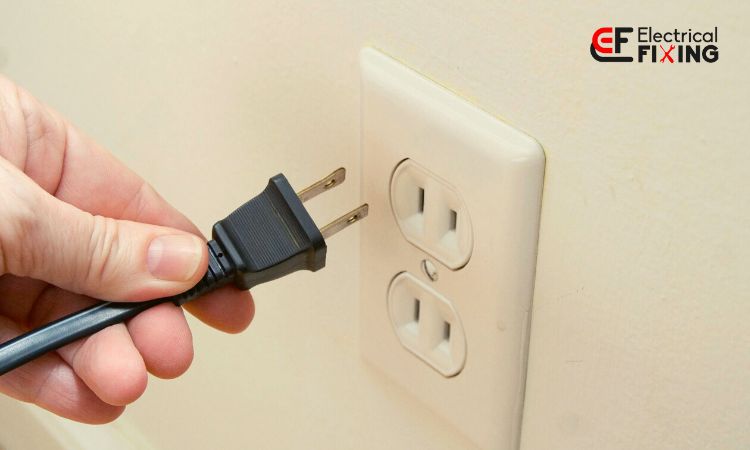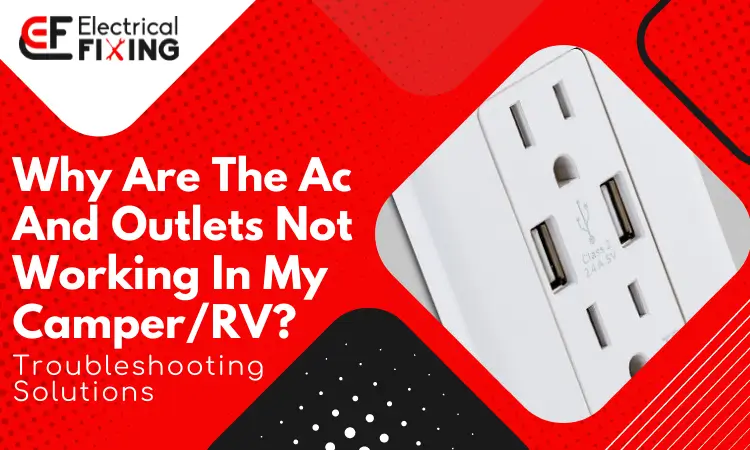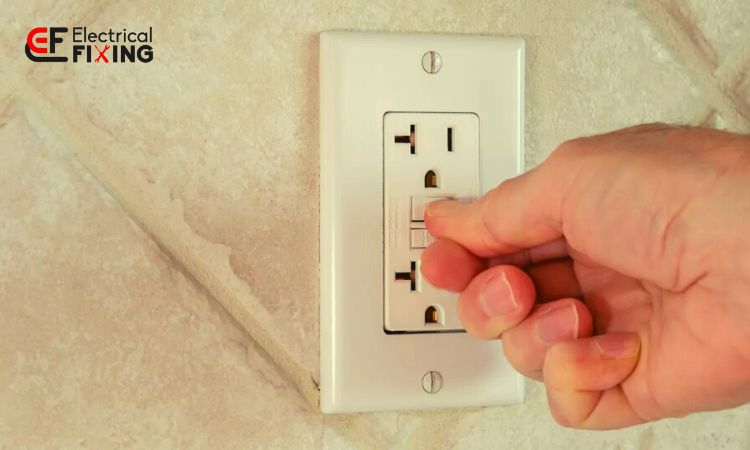Hey there! This post contains affiliate links to products. We may receive a commission for purchases made through these links. But it never influences our product selection process.
Are you experiencing frustration when trying to plug in your devices, only to find that the plug won’t go into the outlet? This common problem can be quite puzzling, but fear not! In this article, I will explore the various reasons why your outlet may be causing compatibility issues and provide you with practical solutions to get your plugs fitting snugly into the outlets again.
So, let’s dive in and unravel the mysteries behind this perplexing issue.
Why Won’t My Outlet Let Me Plug-In?
There are several reasons why your plug won’t go into the outlet. Understanding these causes will help you troubleshoot and address the problem more effectively. Let’s explore some common culprits:
Loose Contacts or Bent Prongs
Sometimes, the issue lies with the contacts inside the outlet or the prongs on your plug. Over time, outlets can become loose, and the prongs on plugs may get bent. These issues can prevent a proper connection between the plug and the outlet, making it difficult to insert the plug.
Incorrect Plug Type
Not all plugs are created equal. Different countries and regions have different electrical systems, which means that plugs may vary in shape and size. If you are using a plug that is not compatible with the outlet design, you will encounter difficulties when attempting to insert it.
Obstructions in the Outlet
Dust, debris, or even foreign objects lodged inside the outlet can obstruct the path and prevent the plug from fitting in properly. It’s important to keep your outlets clean and free from any obstructions to ensure a smooth plug-in experience.
Now that we’ve identified some of the common causes, let’s move on to practical solutions to address the issue.
Plug Won’t Go into Outlet: Problems and Solutions

(Note: Before attempting any solutions, ensure your safety by turning off the power to the outlet at the circuit breaker.)
Loose Contacts or Bent Prongs
If the contacts inside your outlet are loose or the prongs on your plug are bent, you can try the following solutions:
- Gently tighten the contacts: Use a flathead screwdriver to tighten the screws holding the outlet cover in place. This might help secure the contacts and provide a better connection.
- Straighten bent prongs: If your plug prongs are bent, carefully use pliers to straighten them out. Be gentle to avoid breaking or damaging the prongs.
Incorrect Plug Type
If you’re dealing with an incompatible plug, you have a few options:
- Use an adapter: Purchase a plug adapter that converts the shape and size of your plug to match the outlet’s configuration. Ensure that the adapter is compatible with both your plug and the outlet.
- Replace the plug: If the plug is not a standard type used in your region, consider replacing it with a compatible one that fits the outlets in your area. This will ensure a proper and safe connection.
Obstructions in the Outlet
If you suspect an obstruction in the outlet, here’s what you can do:
- Inspect and clean the outlet: Carefully examine the outlet for any visible dust, debris, or foreign objects. If you notice any, use a dry cloth or a can of compressed air to clean the outlet gently. Avoid using liquids or abrasive materials that could damage the outlet.
Fixing a Loose Electrical Outlet: Step-by-Step Guide
If you’ve tried the solutions above and are still facing issues, you may have a loose electrical outlet. Here’s a step-by-step guide to help you fix it:
- Turn off the power: Before working on the outlet, turn off the power to the circuit at the main electrical panel.
- Remove the cover plate: Unscrew the cover plate from the outlet using a screwdriver.
- Tighten the screws: Carefully tighten the screws holding the outlet to the electrical box. Ensure a snug fit but avoid over-tightening.
- Test the outlet: Turn the power back on and test the outlet with a voltage tester to ensure it is functioning correctly.
Dealing with Obstructed Outlets
If your outlet is obstructed by furniture, curtains, or other objects, it’s essential to address the situation promptly. Here are a few tips:
- Rearrange furniture: Move furniture away from outlets to ensure unobstructed access. Consider using extension cords or relocating your furniture layout if necessary.
- Keep curtains clear: Make sure your curtains or drapes are not covering or blocking any outlets. Adjust them to allow easy access to the outlets.
Ensuring Safety Precautions
While attempting to resolve plug-outlet compatibility issues, it’s crucial to prioritize safety. Remember these key safety precautions:
- Turn off the power: Always turn off the power to the outlet at the circuit breaker before attempting any solutions. This will prevent the risk of electric shock.
- Handle with care: When working with outlets and plugs, handle them carefully to avoid injury or damage. Use insulated tools when necessary.
- Consult a professional: If you are uncomfortable or unsure about any electrical work, it’s best to seek assistance from a qualified electrician. They have the expertise to handle complex electrical issues safely.
When to Call an Electrician
While many plug-outlet compatibility issues can be resolved with simple solutions, there are times when professional help is necessary. Consider calling an electrician in the following situations:
- Repeated problems: If you consistently face plug-outlet compatibility issues despite trying various solutions, it could indicate an underlying electrical problem that requires professional attention.
- Safety concerns: If you encounter sparking, flickering lights, burning smells, or other signs of electrical hazards, it is crucial to contact an electrician immediately. These issues can be serious and require professional expertise to address them safely.
Frequently Asked Questions (FAQs):
Why won’t my plug fit into the outlet?
There could be several reasons, such as loose contacts, bent prongs, incompatible plug types, or obstructions in the outlet. Refer to the earlier sections for detailed solutions.
Can I force a plug into an outlet?
No, forcing a plug into an outlet can be dangerous and may cause damage to the outlet, the plug, or even result in electrical hazards. It’s important to address the underlying issue instead.
Do I need an electrician to fix plug-outlet compatibility issues?
Not always. Many common issues can be resolved with the solutions provided in this article. However, if you are unsure or uncomfortable with electrical work, it’s best to consult a professional electrician.
Can I use adapters to fit incompatible plugs into outlets?
Yes, plug adapters can be used to convert the shape and size of a plug to match the outlet. Ensure that the adapter is compatible with both the plug and the outlet for safe usage.
Conclusion
Experiencing frustration when your plug won’t go into outlet can be a common but perplexing issue. By understanding the causes behind this problem and following the practical solutions provided, you can troubleshoot and address the issue effectively. Remember to prioritize safety, consult a professional when needed, and follow the recommended safety precautions. With these steps, you can ensure a snug and secure connection between your plugs and outlets, allowing you to power up your devices without any hassle.
Hey, I’m Steven Jones, the founder, and writer of this site. I have worked in Electrical for the past 5 years. I also know how to save energy and how to troubleshoot our electrical devices. I hope you enjoy my blog.



